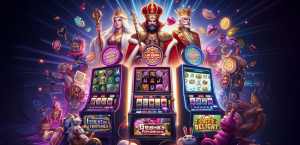
As color prediction games rise in popularity, so does the debate about who should be allowed to play. The blurred line between entertainment and gambling raises critical age-related concerns.
What Are Color Prediction Games, Really?
These games often appear simple and fun—guessing the next color in a sequence—but many involve real money stakes, placing them closer to chance-based gambling than casual gaming.
The Role of Chance and Risk
Unlike puzzle games or arcade titles, color prediction relies on random outcomes, which means players are taking risks that resemble those in lotteries or casino games.
Minimum Age Requirements Around the World
Different countries have different rules:
- India: Varies by state, often 18+
- Philippines: 21+ for gambling-related activities
- UK: 18+ for betting or chance-based games
These laws reflect a universal concern about minors accessing risky platforms.
Psychological Readiness: Not Just About Age
Legal age is one thing, but mental and emotional maturity is another. Young players may not fully grasp the concepts of odds, loss, and self-control, making early exposure risky.
The Brain Science Behind Risk-Taking in Youth
Studies show the human brain—especially the prefrontal cortex that governs decision-making—doesn’t fully mature until age 25. This means younger users may be more impulsive and susceptible to risky behavior.
The Influence of Peer Pressure and Trends
Color prediction games often spread through social media and peer groups, increasing the likelihood that underage users will encounter them or be tempted to join in.
The Marketing Problem: Appealing to Young Audiences
Bright colors, playful sounds, gamified rewards—many of these platforms unintentionally (or intentionally) appeal to a younger demographic, creating a misleading first impression.
The Role of Parents and Guardians
Parents should stay informed and involved, ensuring age-appropriate gaming choices, setting spending limits, and discussing the real-world consequences of betting or gambling behaviors.
How Platforms Enforce Age Restrictions
Some platforms require ID verification and user age confirmation. However, loopholes exist, especially on apps that allow anonymous sign-ups or virtual currency wallets.
Signs That a Player Might Be Too Young
Red flags include:
- Obsessive play patterns
- Secretive online behavior
- Borrowing money to “recover losses”
Sudden emotional reactions to game outcomes
These signs suggest that the player may be too young or too emotionally unprepared.
Responsible Gaming Features: Are They Enough?
Some platforms now offer:
- Self-exclusion options
- Loss limits
Reality checks
While helpful, these features require the player to opt-in, which may not work well for younger users lacking self-regulation.
The Legal Grey Area of Virtual Currency
Some games use coins or tokens instead of cash, but if these can be bought or exchanged, the line between gaming and gambling remains thin, regardless of the terminology used.
School and Community Education on Digital Risks
Just like with social media and screen time, communities must include color prediction and online betting games in their education on digital safety and media literacy.
How Game Design Can Help Protect Young Players
Designers can:
- Enforce strict age gates
- Avoid childlike themes or avatars
Limit real-money incentives
Such ethical design choices reduce the chance of accidental exposure or underage engagement.
Should There Be a Global Standard?
A universal standard—such as 18+ for all chance-based games involving money or monetary equivalents—could help platforms create consistent safety policies worldwide.
What About “Just for Fun” Versions?
Some platforms like 91 club login offer demo modes or coin-only play with no cash involvement. These may seem harmless but still teach reward systems and pattern dependence, which can influence young minds long-term.
Cultural Differences in Attitudes Toward Age and Gaming
Some cultures are more relaxed about youth and gaming, while others view it as a serious moral or educational concern. Understanding local values helps shape relevant policy and parenting.
Platforms That Are Leading by Example
A few reputable platforms:
- Require government ID verification
- Conduct regular audits
Provide transparency on game odds
These are taking steps toward ethical responsibility in age-appropriate access.
Final Thoughts: Age Isn’t Just a Number
Determining the right age for color prediction games involves a blend of legal compliance, emotional readiness, social influence, and platform responsibility. Until universal safeguards are in place, awareness and education remain our best defense.


